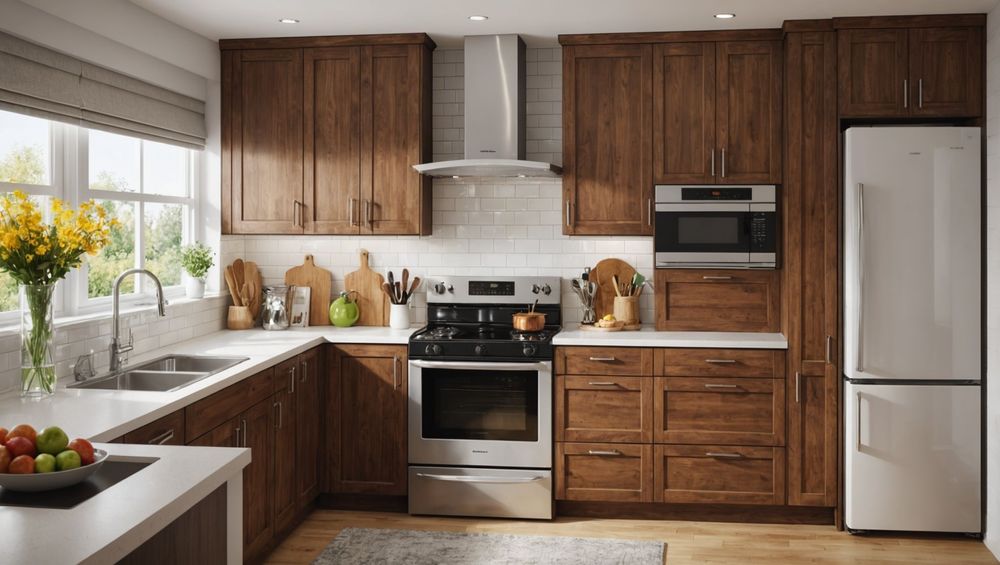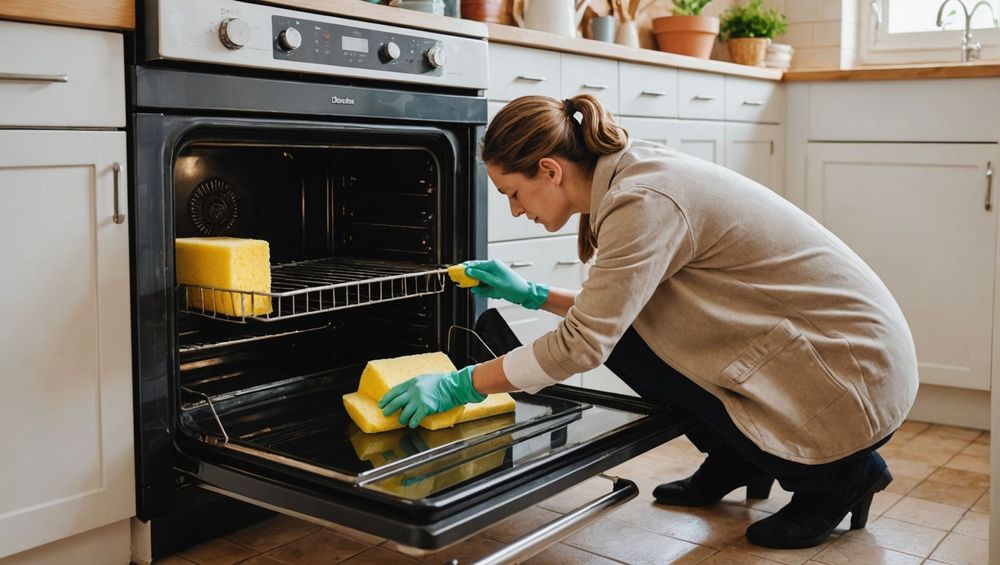Cleaning your oven is essential for maintaining a sanitary kitchen and ensuring that your food tastes great. Fortunately, whether you have an oven with a self-cleaning feature or one that requires manual intervention, cleaning can be a straightforward process. This article will guide you through effective methods for cleaning your oven, along with tips and tricks for tackling tough stains and ensuring your appliance sparkles.
Understanding Your Oven’s Cleaning Options

Before diving into the cleaning process, it’s important to understand the different cleaning methods available for your oven. If your oven has a self-cleaning function, this can simplify the task immensely. The self-cleaning feature uses high temperatures to incinerate food residue, transforming it into ash that can be easily wiped away. On the other hand, if you do not have this option, manual cleaning will require some elbow grease and the right cleaning supplies. Knowing which option is suitable for your oven will make your cleaning process more efficient.
Preparing for Manual Cleaning
If you decide to clean your oven manually, preparation is key. Start by gathering your cleaning supplies, which will include the following items:
- Oven cleaner (either commercial or a homemade solution made from baking soda and water)
- Scrubbing pads or sponges
- Rubber gloves to protect your hands
- A bucket or large bowl for mixing your cleaning solution
- Mop or cloth for wiping down surfaces
Make sure to read any instructions on your commercial oven cleaner for safety precautions and application tips. Additionally, it’s a good idea to ventilate the area by opening windows or turning on your kitchen fan before cleaning. This will help in reducing the fumes and odors that arise during the cleaning process.
Step-by-Step Guide for Manual Oven Cleaning

Now that you’re prepared, follow these steps to clean your oven effectively:
- Remove Oven Racks: Take out the racks and soak them in hot soapy water or clean them separately with your oven cleaner. This makes it easier to clean the interior.
- Apply Cleaner: Spray your chosen oven cleaner liberally over the interior surfaces of the oven, focusing on areas with heavy grime. If using baking soda paste, apply it and let it sit for a few hours or overnight for tough stains.
- Let it Sit: Allow the cleaner to work its magic. This is particularly important if you’re using a baking soda solution.
- Scrub: After the waiting period, use your scrubbing pad or sponge to gently scrub the surfaces. The burnt-on food should come away easily.
- Wipe Down: Use a damp cloth to wipe away any remaining cleaner, ensuring no residue is left behind. It might require several passes to ensure a thorough clean.
- Replace Racks: Once the inside is clean and dry, replace the dishwasher-safe oven racks.
Using the Self-Cleaning Feature
If your oven has a self-cleaning function, you can minimize your effort significantly. Here’s how to use it correctly:
First, remove any items from inside the oven, including the oven racks, as most self-cleaning cycles can damage them. To initiate the self-cleaning cycle, close the oven door and set the function according to the manufacturer’s instructions. Typically, this involves selecting a cleaning mode and setting the timer. The oven will heat up to a high temperature, typically between 800 to 1000 degrees Fahrenheit, to incinerate any leftover food deposits. After the cycle ends, allow the oven to cool down. Once it’s cool, use a damp cloth to wipe away the ash left behind. This method is efficient and requires minimal manual labor, making it ideal for busy households.
Maintaining a Clean Oven
Once your oven is clean, it’s crucial to implement regular maintenance to keep it in tip-top shape. Here are some tips:
- Wipe down the inside of your oven after each use to remove spills and splatters promptly.
- Use oven liners to catch food spills and prevent them from sticking to the oven surface.
- Consider cleaning your oven every few months, or more often if you frequently cook saucy or messy foods.
- Avoid using aluminum foil on the bottom of the oven; it can block airflow and cause overheating.
- Keep the oven door sealing and hinges clean to ensure energy efficiency and proper heat retention.
Conclusion
Cleaning your oven, whether manually or using the self-cleaning feature, is essential to maintaining both the appliance and the quality of your food. By following the steps outlined above, you can ensure that your oven remains clean and efficient. Don’t forget that regular maintenance plays a crucial role in minimizing the tough cleaning you have to do, keeping your kitchen space fresh and healthy.
FAQs
1. How often should I clean my oven?
It is recommended to clean your oven every three to six months, or more often if you frequently burn food or cook messy dishes.
2. Is it safe to use commercial oven cleaners?
Yes, commercial oven cleaners are generally safe when used as directed. However, ensure the area is well-ventilated and follow all safety precautions on the label.
3. Can I clean my oven while it’s still hot?
It is not advisable to clean your oven while it’s still hot as this could lead to burns or accidents. Wait until it has cooled down completely.
4. What if food is heavily charred and won’t come off?
For heavily charred food, let the oven cleaner sit for an extended time (up to overnight) to loosen the grime before scrubbing.
5. Can I use vinegar and baking soda to clean my oven?
Yes, a mixture of vinegar and baking soda can be effective for cleaning ovens. Apply the paste, let it sit, and then scrub after some time for optimal results.



